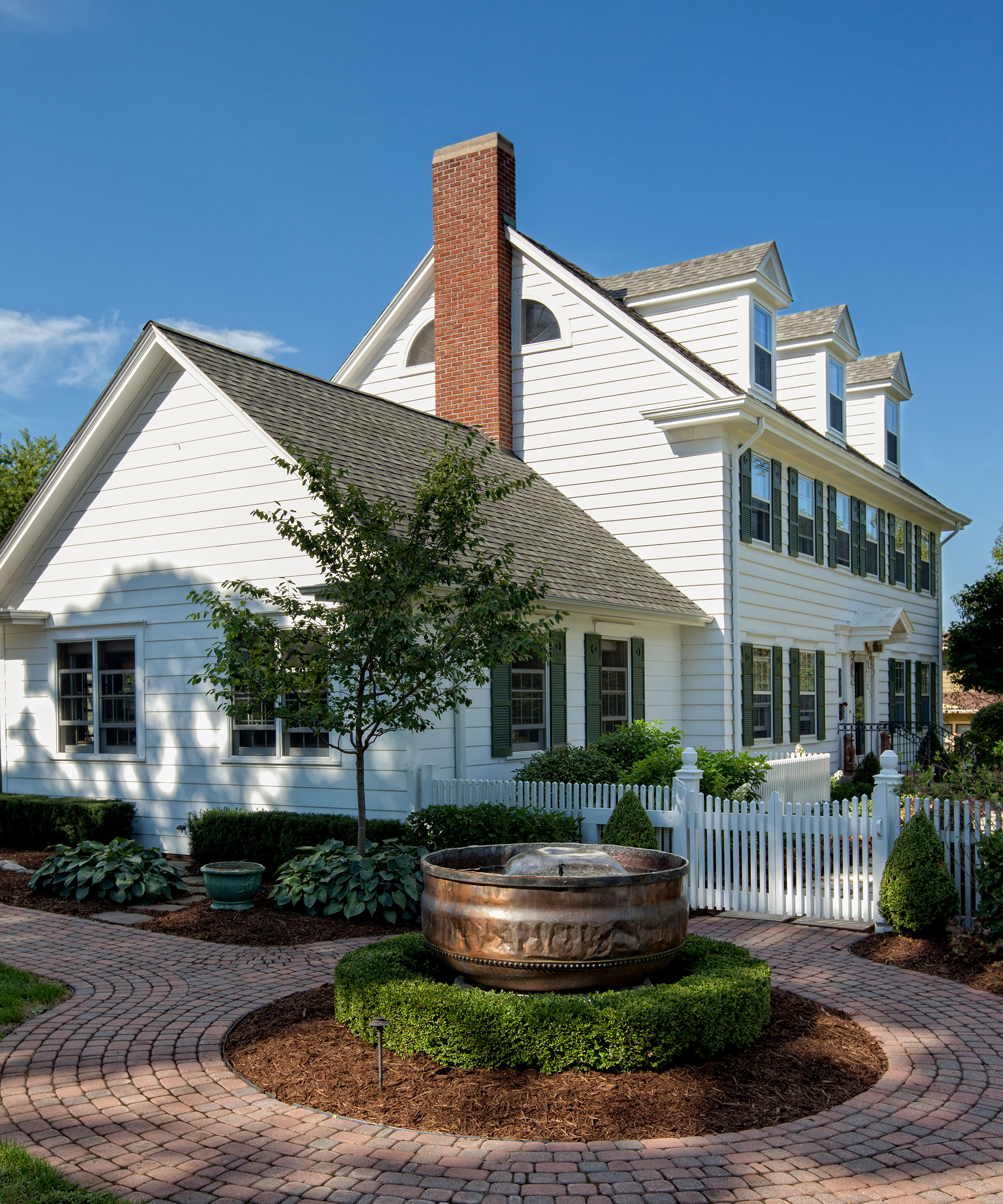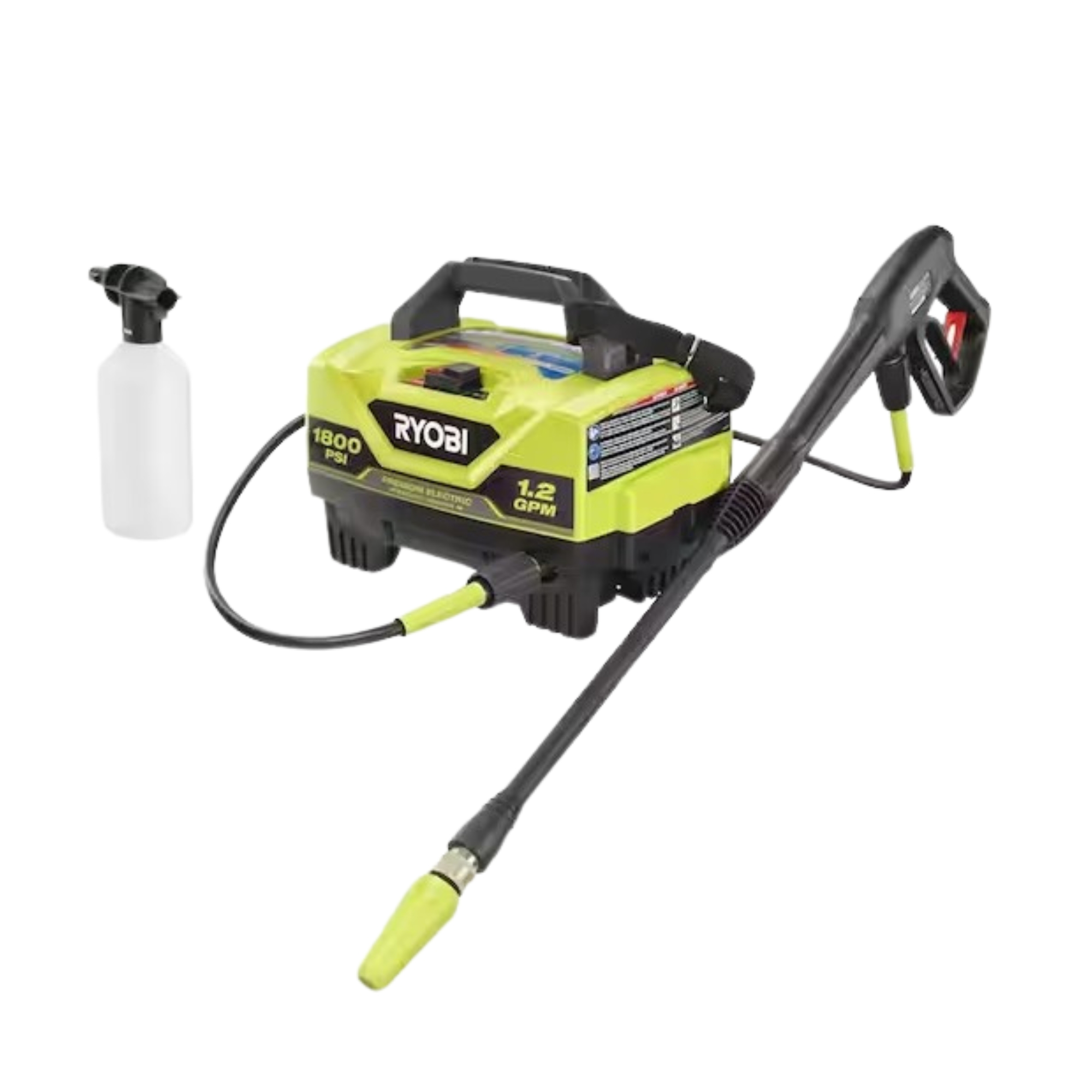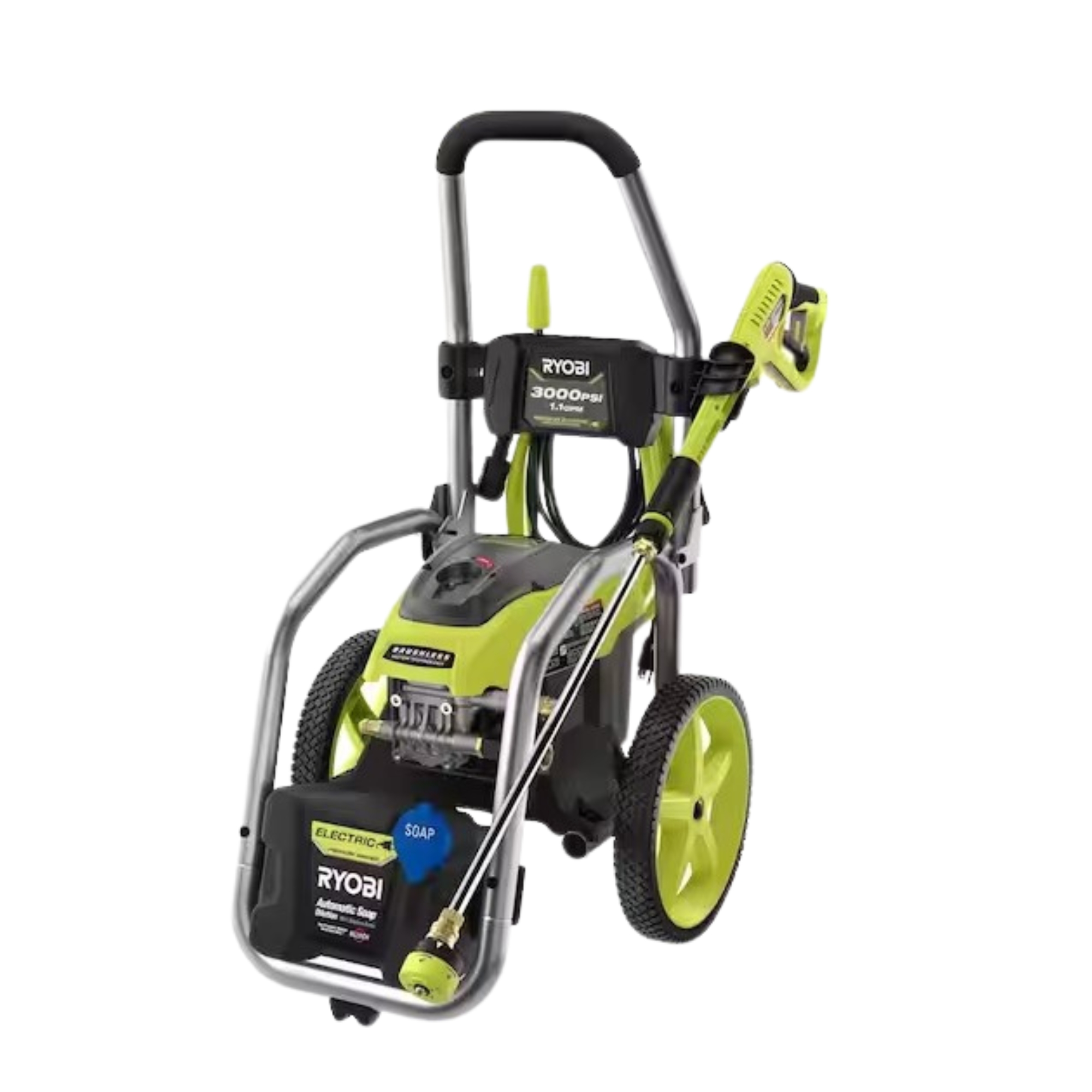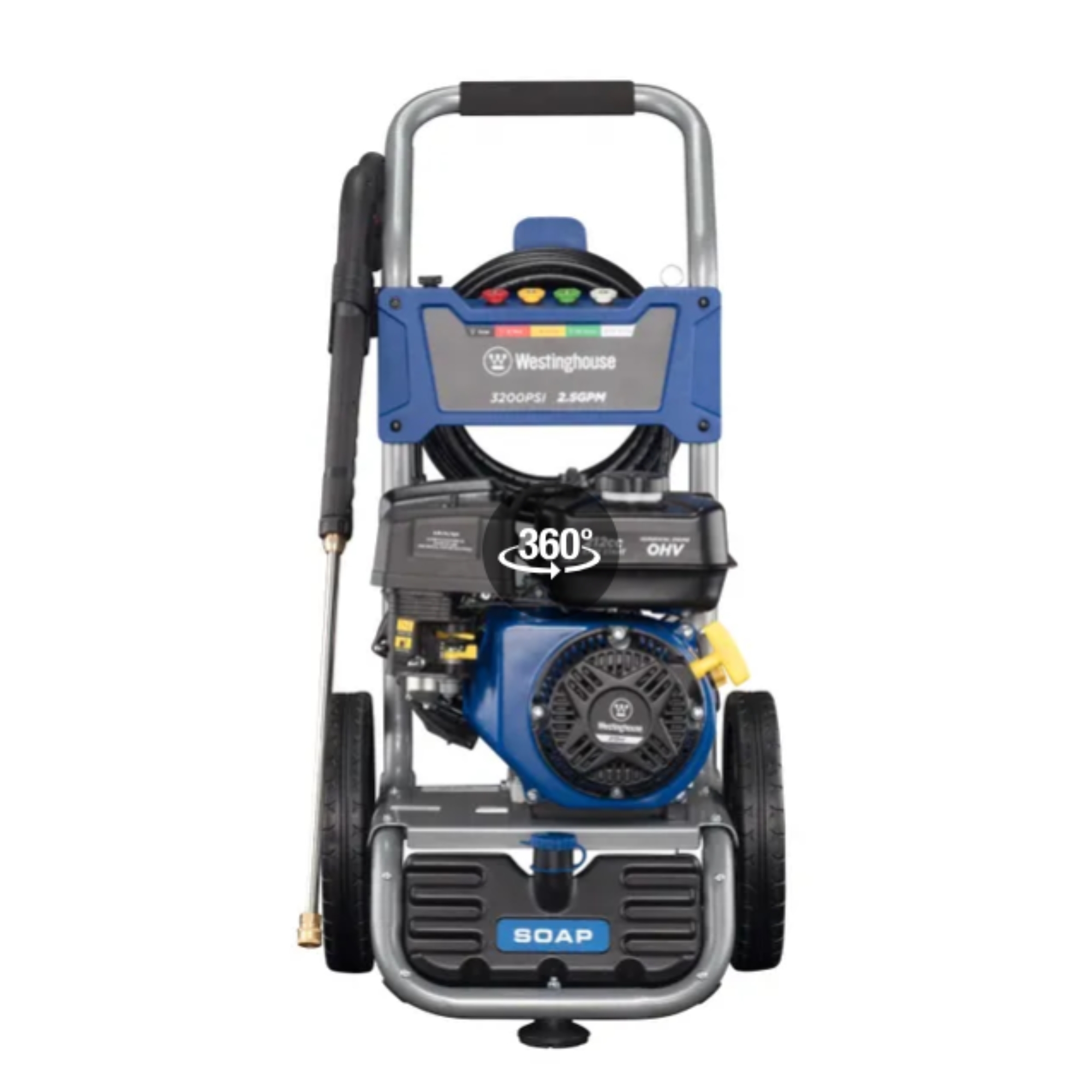How to power wash a house – experts reveal how to get rid of dirt and grime
Power wash your house to add curb appeal and reduce damage to the exterior of your home


Whether you live, dirt, grease, grime and even mold will attach itself to the outside of your home. Leave it and not only will it spoil the look of your house, but eventually it will start to eat away at the surface and spoil paint and let in water causing unwanted damage inside and out.
Power wash the outside of your home on a regular basis and these problems will stay away for longer, saving on expensive repairs. It will restore the curb appeal of your home and give it a like new appearance or get it ready for a fresh new coat of paint.
Here we share essential tips from the pros on what equipment you’ll need, how much it will cost, how to power wash and what not to do to ensure a great looking finish.

Should you power wash a house yourself? What the experts say
Do you want to tackle the job yourself and save yourself a few dollars in the process? But should you? ‘It is something DIYers can do, but it does require caution when it comes to the process and understanding the equipment. If DIYers are familiar with the equipment and process then it is recommended,’ says Chuck Reger from Five Star Painting.
‘Yes, absolutely’ shares Josh Rudin, owner of ASAP Restoration LLC. ‘A solid consumer-grade pressure washer is an affordable and effective solution for most home pressure washing needs. They are a versatile and easy to manage solution to caked on grime for a number of surfaces.’
How much will it cost?
If you do decide to tackle the power washing yourself you will need to consider the costs - unless of course you already have your own pressure washer at home. ‘The costs for rentals and items needed can range from $50 - $200,’ reveals Reger.
Is it worth purchasing your own pressure washer? A home needs regular cleaning, so it would make sense to think about buying one. ‘A good pressure washer for the home will run between $100-$300 and work very well for most consumer situations and needs.’ says Rudin.
If you decide the DIY route is not for you, ‘Expect to pay anywhere between $45-$100 an hour for professional services.’ shares Reger. But, this can differ depending on the type of project, explains Rudin, ‘Most professional pressure washing companies will charge per project, or per square foot, with the latter more common for jobs that are contractual and washed regularly like sidewalks and driveways. For individual projects, a standard driveway may cost anywhere between $200-$500, or on a square footage basis, the range might be something like $0.10 - $0.50 per square foot of space.’
Design expertise in your inbox – from inspiring decorating ideas and beautiful celebrity homes to practical gardening advice and shopping round-ups.
What equipment do I need to power wash a house?
Tackling power washing yourself involves a set of tools that you might not have at home. If you don’t have the necessary tools, you need to purchase or think about hiring.
‘You’ll need the pressure washer itself, a hose for water delivery, the wand for washing, nozzle attachments for various situations, a cleaning solution, safety gear, and typically a ladder or some other way of getting higher up or and reaching difficult spots from the ground’, suggests Rudin. And don’t forget personal protective equipment such as safety glasses, gloves and ear protectors.
But what type or pressure washer should you be looking at? ‘The size of your house is the best determination of the type of pressure washer you need’, explains Reger. ‘Electric pressure washers will get the job done for small single-story homes. Gas-powered pressure washers, like this Westinghouse WPX3400 Gas Pressure Washer from Amazon, are the better option for larger two-story homes, any range from 1500-3000 psi will get the job done.’
What should I do before I start a power wash?
‘You need to inspect your house before starting the pressure washer’, recommends Reger. ‘Make sure there is no loose siding, damaged paint, cracks in windows, or any vulnerable areas that water can damage. Make sure all windows are closed and the doors are sealed also cover any electrical outlets to prevent damage. Make sure all outdoor furniture is stored away.’
Make sure to ‘Trim any vegetation that may get in the way, or that might spread dirt into the washed area after cleaning. And, remove any obstacles from the pressure washing area.’ suggests Rudin.
What's the best order to do it in?
‘It's best to start at the top of your house and work your way down to the bottom, this prevents streaking.’ says Reger. ‘Make sure you start on a low pressure to rinse the surface and apply the soap/detergent from top to bottom. Let it stand for a few minutes then begin on high pressure from top to bottom. Do not do this process along the whole house, break it off into sections.’
Rudin suggests that you pick, ‘A nice warm day where the sun won’t beat down too hard, and there is low humidity. Avoid starting late in the day so that you can prevent having to wash into the evening to get it done.’

How to power wash your home
Before you start there’s a couple of simple steps that Rudin suggests you take. ‘Test the washer off of the home to ensure the right amount of pressure. Don protective gear. Start washing.’
Niki O'Brien, Operations Manager at Custom Exteriors LLC recommends that you, ‘Start at the top of your home and work your way down. Start with the lowest pressure possible, possibly even just a spray nozzle on your house. High pressure can damage your siding, window frames, roof, and even concrete or patio materials if the pressure is high enough.’
One tip she shares is to ‘Start without detergent. Chemicals can damage your siding (particularly vinyl), but we find that most times, just a little elbow grease can get your siding clean without the risk of damage.’
To help ensure a streak-free finish, ‘Pressure wash before the heat of the day if you have decided to use a cleaning agent. The sun can bake detergents into your siding before you have a chance to rinse them in direct sunlight.’
What can go wrong if I power wash my house?
Leave it to the professionals and little will go wrong, but if tackling the power wash yourself there are a few issues that you should try and avoid, ‘You can damage your property by standing too closely, causing dents and etching to the siding, stripping the paint, and damage surfaces if you focus on weak areas for too long.’ shares Reger.
‘Stand no closer than 18 inches from the surface. Standing too closely will force too much water into the surface, increasing the dry time. It can also break down wood surfaces.’
But it's not just the pressure washer that can cause damage as Reger explains, ‘Using incorrect chemicals or improper techniques can cause discoloration or streaking. Plus, consider wetting down any bushes near the structure and lightly rinse these off if any cleaning chemicals are used.’
‘Window damage can occur as a result of pressure washing your home’ explains Rudin. ‘This happens when the high pressure streams break the seals or even the glass itself on windows while cleaning. When the seals are broken, water can seep into the wood, separate it and cause damage to the window structure and operation.’
Plus, ‘Water goes in places that rain can’t get to, and in these cases it can cause water damage to occur. When that happens, mold growth can easily follow right behind it.’
Rudin offers simple but smart advice, ‘Be careful and do a test before you start going at the entire side of your home.’
FAQs
How often should you power wash a house?
As a general guideline you should clean the exterior of your house every 12 months. But this can differ depending on your location, your surroundings and climate. If you live in a hot and humid climate, there is more chance of mold and mildew making an appearance.
This is less likely to happen in an urban area, but wind, rain, dirt and pollution are still factors that can make a difference. Check your house regularly and see if it needs doing sooner.
How long should it take to do?
This will depend on the size of your house, how dirty it is and how easy it is to access different parts of your home. As a rough guideline you should set aside half a day for a single storey house and a day for a two storey house.
Can stucco be pressure washed?
Yes you can, but more delicate types of stucco like bottle dash and rock dash stucco are best left alone. If not sure, test an out of the way area before you start. To help protect stucco use a low pressure setting and a wide spray radius so the spray is not concentrated on one area.
What soap/detergent should I use to power wash a house?
‘Many pressure washer brands have their own specific soap blends that are proprietary to the pressure washing system’, explains Josh Rudin, Owner at ASAP Restoration LLC. ‘This doesn't mean that their specific soap brands have to be used for the system to work, but it may work better. By-and-large, Simple Green (available from Amazon) is a solid solution to all exterior pressure washing needs.’
Make sure that the rest of your outdoor space matches up with your newly power washed home. These 5 expert-approved backyard cleaning tips and our How to remove rust from metal garden furniture guide will ensure your yard is looking good and ready for visitors.

Steve has been a homes writer and editor for two decades, regularly contributing to brands like Homebuilding & Renovating Magazine. He is an avid DIYer with over 20 years of experience transforming and renovating homes. He specializes in painting and decorating but has strong all-around building skills, having worked in the industry for ten years.


